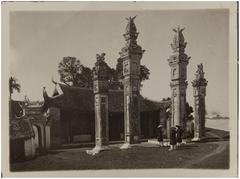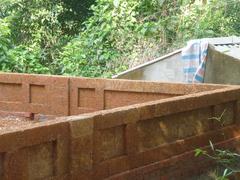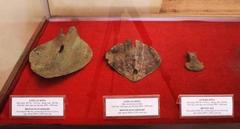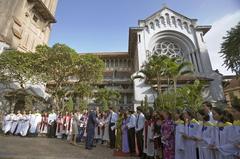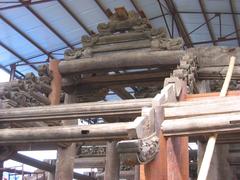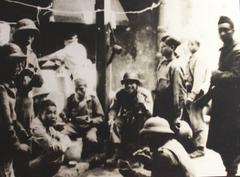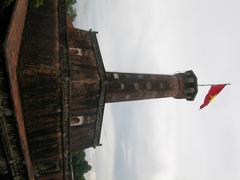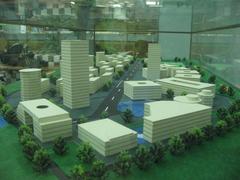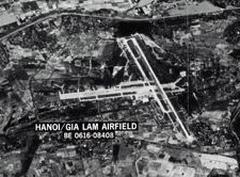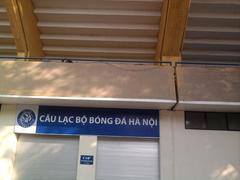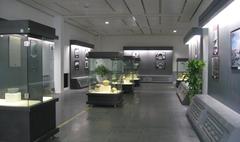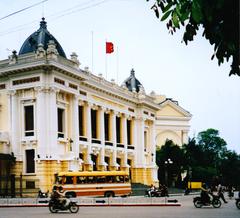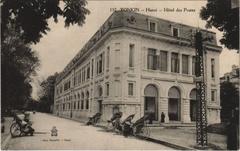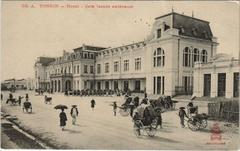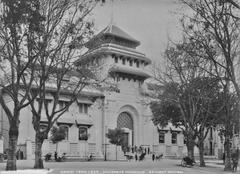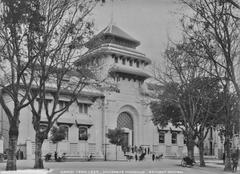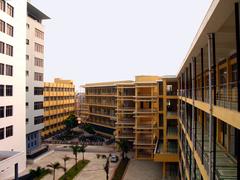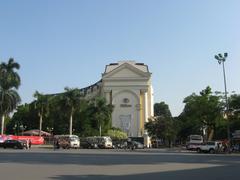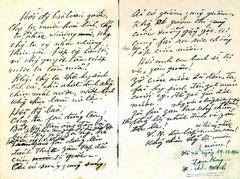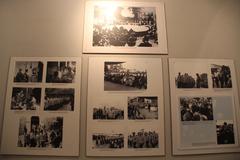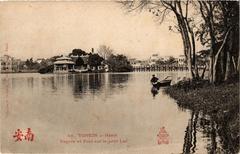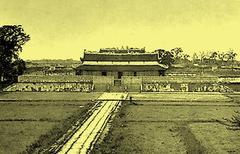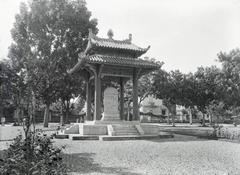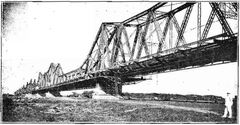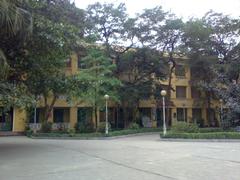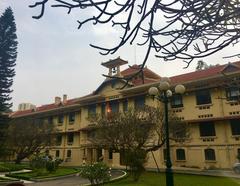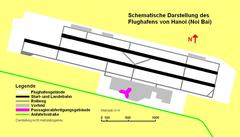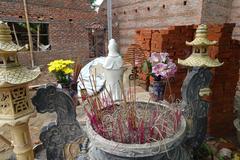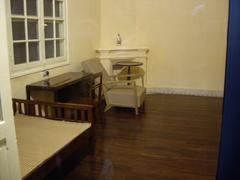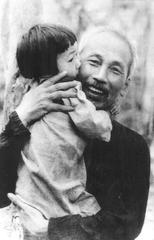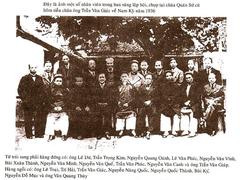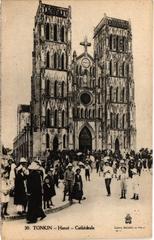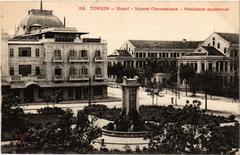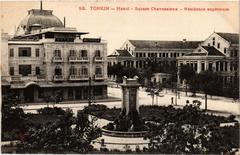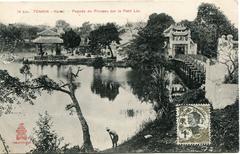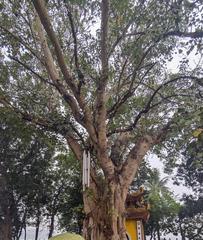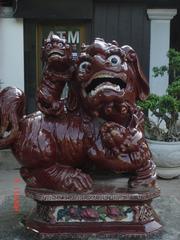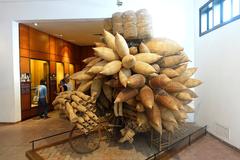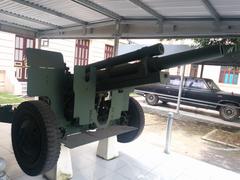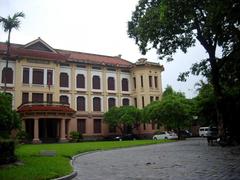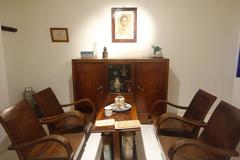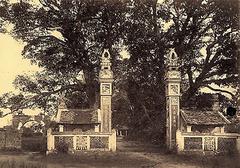Ba Dinh Hall Hanoi: Visiting Hours, Tickets, and Historical Significance Guide
Date: 15/06/2025
Introduction
Ba Dinh Hall, once the seat of Vietnam’s National Assembly, stands as a powerful emblem of the country’s political evolution. Together with Ba Dinh Square, this landmark area in Hanoi has witnessed pivotal events, from the declaration of independence in 1945 to modern legislative milestones. Although Ba Dinh Hall was demolished in 2008 to make way for the new National Assembly Building, the site and its environs remain deeply symbolic, offering visitors rich historical insights and access to some of the city’s most significant sites (Ba Dinh Hall: History, Visitor Information, and Significance in Hanoi’s Political Landscape).
This detailed guide explores the intertwined history and enduring legacy of Ba Dinh Hall, practical tips for visiting Ba Dinh Square and neighboring attractions, and essential visitor information to help you make the most of your journey through Hanoi’s historic heart.
Table of Contents
- Introduction
- Origins and Construction of Ba Dinh Hall
- Role in Vietnamese Political Life
- Architectural Features and Symbolism
- Demolition and Archaeological Discoveries
- Visiting Ba Dinh Square Today
- Historical Significance of Ba Dinh Square
- Architectural and Spatial Layout
- Cultural and Political Importance
- Practical Visitor Tips
- Nearby Attractions
- Events and Ceremonies
- Local Insights
- Visiting the New National Assembly Building
- FAQs
- Visuals and Media
- Useful Links
- Conclusion
Origins and Construction of Ba Dinh Hall
Ba Dinh Hall was constructed from the late 1950s to 1963 under the guidance of architect Nguyễn Cao Luyện. Its establishment marked Vietnam’s transition from colonial rule to sovereignty, embodying both modernist aspirations and national identity. Strategically positioned opposite the Ho Chi Minh Mausoleum on Ba Dinh Square, the hall became an integral part of Vietnam’s political landscape (Ba Dinh Hall: History, Visitor Information, and Significance in Hanoi’s Political Landscape).
Role in Vietnamese Political Life
Serving as the main venue for National Assembly sessions, Communist Party congresses, and key state functions, Ba Dinh Hall was where critical legislation was passed and historic ceremonies, including Ho Chi Minh’s state funeral in 1969, took place. The hall symbolized national unity and governance throughout its four decades of use.
Architectural Features and Symbolism
Ba Dinh Hall exemplified socialist modernism, with a monumental façade and spacious interiors designed to accommodate hundreds of delegates. Its prominent location on Ba Dinh Square—where Vietnam’s independence was declared—underscored its significance as a bridge between revolutionary heritage and modern political life.
Demolition and Archaeological Discoveries
In 2008, Ba Dinh Hall was demolished to make way for the new National Assembly Building. The process unearthed significant archaeological remains from the ancient imperial city of Thăng Long, including artifacts from the Lý, Trần, and Lê dynasties. These discoveries enriched the site’s historical narrative and temporarily delayed new construction, further highlighting the area’s layered history.
Visiting Ba Dinh Square Today
Can I Visit Ba Dinh Hall?
Ba Dinh Hall no longer exists, and the site is not open for visitation. However, Ba Dinh Square, the adjoining political and ceremonial heart of Hanoi, remains freely accessible and is a must-visit for anyone interested in Vietnam’s heritage (Ba Dinh Square Visiting Hours, Tickets & Guide: Explore Hanoi’s Historic Heart).
Ba Dinh Square Visiting Hours and Tickets
- Opening Hours: Open to the public 24/7
- Admission: Free of charge
Visitors can stroll the expansive lawns, witness daily flag-raising and lowering ceremonies, and admire the surrounding historical architecture.
Key Surrounding Landmarks
- Ho Chi Minh Mausoleum: The final resting place of President Ho Chi Minh.
- Hours: Tuesday–Thursday, Saturday–Sunday, 7:30 AM–10:30 AM; closed Mondays, Fridays, and from June 15 to August 15 (maintenance).
- Admission: Free, but strict dress and behavior codes apply.
- Presidential Palace: A grand French colonial-era building (exterior viewing only).
- One Pillar Pagoda: An 11th-century Buddhist pagoda, open daily 8:00 AM–5:00 PM.
- Ho Chi Minh Museum: Open Tuesday–Sunday, 8:00 AM–5:00 PM; closed Mondays; 40,000 VND entrance fee.
Photographic Spots and Tours
Ba Dinh Square offers excellent photo opportunities, especially at sunrise during the flag ceremony. Guided walking tours provide historical context and cover the square along with the Ho Chi Minh Mausoleum complex.
Historical Significance of Ba Dinh Square
Ba Dinh Square is Vietnam’s symbolic center. Built on the grounds of the ancient Thang Long Imperial Citadel, the square commemorates the Ba Dinh Uprising against French colonial rule. Its most historic moment was on September 2, 1945, when Ho Chi Minh declared Vietnamese independence (Ba Dinh Square Visiting Hours, Tickets & Guide: Explore Hanoi’s Historic Heart). Today, the square continues to host national ceremonies and public events, reinforcing its role as a living monument.
Architectural and Spatial Layout
Measuring around 32,000 square meters, Ba Dinh Square’s lawns and walkways are surrounded by Hanoi’s most significant landmarks. The area’s spatial harmony and imposing structures narrate Vietnam’s journey from imperial rule to modern statehood.
Cultural and Political Importance
Ba Dinh Square is a space where Vietnam’s national identity is continually reaffirmed. Daily military flag ceremonies at sunrise and sunset are open to the public and are deeply symbolic. On national holidays, especially September 2, the square becomes the main stage for military parades, cultural performances, and gatherings (Ba Dinh Square Visiting Hours, Tickets & Guide: Explore Hanoi’s Historic Heart).
Practical Visitor Tips
Getting There
- By Taxi/Grab: Convenient from anywhere in Hanoi, including Noi Bai International Airport (~35–40 minutes).
- By Public Bus: Routes 09, 22, and 33 stop near the square.
- By Motorbike/Bicycle: Ideal for adventurous travelers.
- On Foot: Walkable from the Old Quarter and nearby historical sites (Ba Dinh Square Visiting Hours, Tickets & Guide: Explore Hanoi’s Historic Heart).
Best Times to Visit
- Early Morning/Late Afternoon: Avoid heat and crowds; witness the flag ceremonies.
- National Holidays: Expect vibrant celebrations and large crowds.
Dress Code and Etiquette
- Modest attire is required, especially inside the mausoleum and religious sites.
- Maintain silence and respectful behavior during ceremonies and inside solemn spaces.
Accessibility
The square is accessible for visitors with mobility challenges, though some surrounding sites may have steps or uneven terrain.
Photography
Allowed throughout the square, but not inside the Ho Chi Minh Mausoleum or during specific ceremonies. Always check signage and follow security instructions.
Nearby Attractions
- Imperial Citadel of Thang Long: UNESCO World Heritage Site.
- Hanoi Flag Tower: Offers panoramic city views.
- Vietnam Fine Arts Museum: Showcases Vietnamese art from ancient to modern times.
These sites are within walking distance and can be combined for a full day of historical exploration.
Events and Ceremonies
Ba Dinh Square is the epicenter for state ceremonies, military parades, and public gatherings. The daily flag ceremonies are particularly popular. On special occasions, the area is decorated with banners and flowers, reflecting national pride.
Local Insights
Locals use the square for morning exercises, family outings, and contemplation. Engaging with local guides will add depth to your understanding of the square’s ongoing historical and cultural significance (Ba Dinh Square Visiting Hours, Tickets & Guide: Explore Hanoi’s Historic Heart).
Visiting the New National Assembly Building
History and Development
Built on the site of the former Ba Dinh Hall, the National Assembly Building (Nhà Quốc hội) was completed in 2014 as a contemporary symbol of Vietnam’s governance (Visiting the New National Assembly Building in Hanoi: Hours, Tickets, and Nearby Historical Sites). It represents the nation’s legislative evolution and architectural innovation.
Architecture and Symbolism
The building spans 63,000 square meters over seven floors. It features a cube-shaped exterior (symbolizing earth/mother) and a central circular meeting room (heaven/father), referencing traditional Vietnamese cosmology and folk symbolism (Visiting the New National Assembly Building in Hanoi: Hours, Tickets, and Nearby Historical Sites).
Visitor Access and Etiquette
- Interior Access: Not open to the general public. Entry is limited to authorized personnel and special guests.
- Photography: Permitted of the exterior, but avoid obstructing official activities.
- Best Views: Ba Dinh Square offers the best vantage points for photographs.
Nearby Historical Sites
Within a 15-minute walk: Ho Chi Minh Mausoleum, Presidential Palace, One Pillar Pagoda, Vietnam Military History Museum, and the Temple of Literature (Trek Zone).
Local Experiences
Ba Dinh District features wide boulevards, French colonial villas, and local eateries serving specialties like “pho cuon.” Parks and lakes nearby offer peaceful retreats (iTour Vietnam).
Frequently Asked Questions (FAQ)
Q: Is Ba Dinh Hall still standing or open to the public?
A: No, it was demolished in 2008 and is no longer accessible.
Q: What are Ba Dinh Square’s visiting hours and ticket requirements?
A: The square is open 24/7 and is free to enter.
Q: Are there entrance fees for nearby attractions?
A: Ho Chi Minh Mausoleum is free; Ho Chi Minh Museum charges a small fee.
Q: Are guided tours available?
A: Yes, they can be booked through local agencies or official tourism offices.
Q: Can I photograph inside the mausoleum?
A: No, photography is prohibited inside the mausoleum but allowed in the square.
Visuals and Media
Interactive Map of Ba Dinh Square and Nearby Attractions
Useful Links
- Official Hanoi Tourism Website
- Vietnam National Administration of Tourism
- Ba Dinh Square on Asia King Travel
Conclusion
Ba Dinh Hall and Square are foundational to Vietnam’s national narrative. While the hall itself no longer stands, the square and its neighboring sites offer a window into the country’s revolutionary history, political progression, and vibrant public life. Visitors can witness daily ceremonies, explore nearby cultural treasures, and reflect on Vietnam’s enduring spirit.
For up-to-date visitor information, download the Audiala app for audio guides and travel tips. Engage with local tours, respect site etiquette, and immerse yourself in the historical pulse of Hanoi at Ba Dinh Square.
References
- Ba Dinh Square Visiting Hours, Tickets & Guide: Explore Hanoi’s Historic Heart
- Visiting the New National Assembly Building in Hanoi: Hours, Tickets, and Nearby Historical Sites
- Ba Dinh Hall Visiting Hours, Tickets, and Visitor Guide for Hanoi Historical Sites
- Ho Chi Minh Mausoleum Guide - Asia Mystika
- Ba Dinh District in Hanoi - iTour Vietnam
- National Assembly Building of Vietnam - Trek Zone


